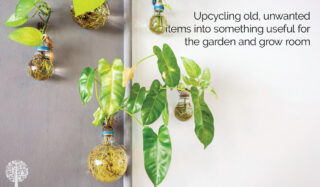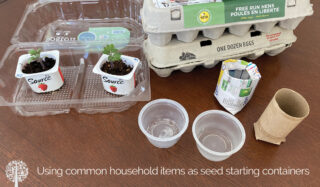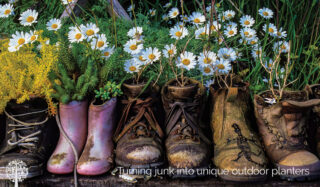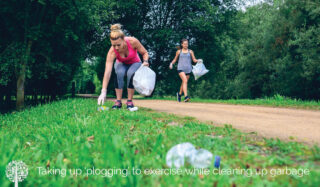Not a day goes by when we shouldn’t be thinking about ways to help heal the planet, and Earth Day draws attention to this cause. EARTHDAY.ORG sets an overall theme for the annual event, and this year’s focus is on ending plastic pollution to improve environmental and human health. Global plastic production is set to double by 2040, but the organization demands a 60% reduction over the next 15 years.
The Problem with Plastic
Microplastics are impossible to avoid and pose a serious threat to all living creatures. They contain toxins that seep into waterways, soil, food, and skin. We all breathe and ingest plastic particles daily, and animals on land and in the sea also succumb to plastic overtaking their natural ecosystems.
Simply put, there is too much plastic on this planet. But there are concrete ways to reduce our dependency on it and, in many cases, avoid it completely. EARTHDAY.ORG has several suggestions.
Avoid Fast Fashion
It’s no secret that the fashion industry is a grind on the environment and many of our natural resources. Did you know that washing clothing made of synthetic materials accounts for 35% of all microplastics found in the ocean? When shopping for clothes, look for companies that make ecologically and socially responsible items. Sustainable fashion is typically of good quality; you might pay more, but hopefully, you’ll keep the items longer. Plus, your social conscience will thank you; supporting eco-friendly clothing companies and reducing how much you buy can go a long way in the fight against plastic pollution.
The #PlasticDetox Social Media Challenge
Who doesn’t love a good challenge? The #PlasticDetox challenge encourages you to reduce plastic use by avoiding single-use items like bags, straws, bottles, and other packaging. Ditch the sandwich bags for washable cloth bags. Forget cling wrap; beeswax plate coverings do a better job and are easier to use. Buy refillable bottles for soaps and natural cleaning solutions rather than throwing them out after you finish the product. Share your progress and inspire others to make simple changes on social media using #PlasticDetox. Once you find ways to ditch single-use plastics, you’ll never go back. Promise.
Join The Great Global Cleanup
The Great Global Cleanup is about encouraging governments, citizens, and businesses to do their part by organizing or participating in a community cleanup. These are fun community events where you can chat with friends and neighbors while collecting garbage and making an impact on Earth Day and beyond. That’s right; it’s not too late to plan something like this! You can register your event or find nearby cleanups at EARTHDAY.ORG. The website also offers tips for planning an event, encouraging participation, and how the cleanup should unfold.
Garden Initiatives
Of course, Garden Culture has come up with plenty of ways you can help combat plastic pollution in and outside of the garden. Here are some of our suggestions:
– Upcycling old, unwanted items into something useful for the garden and grow room

– Using common household items as seed starting containers

– Choosing grow bags over plastic containers for plants

– Turning junk into unique outdoor planters

– Starting seeds with soil blocks over plastic options

– Taking up ‘plogging’ to exercise while cleaning up garbage
